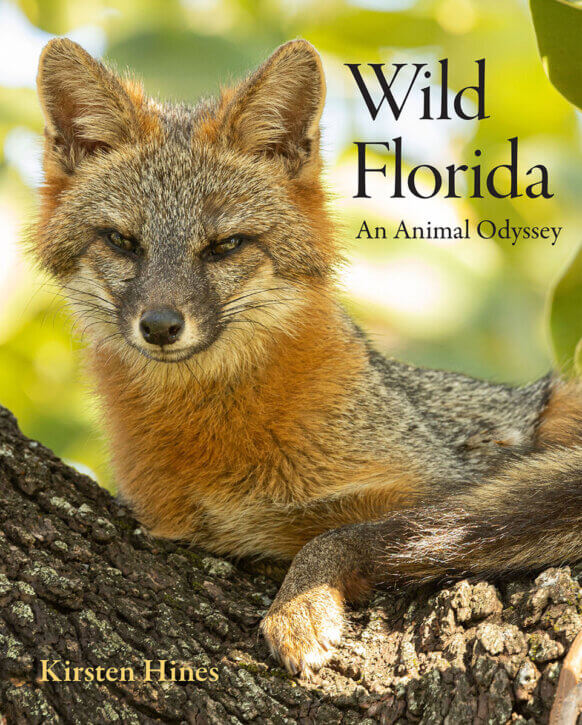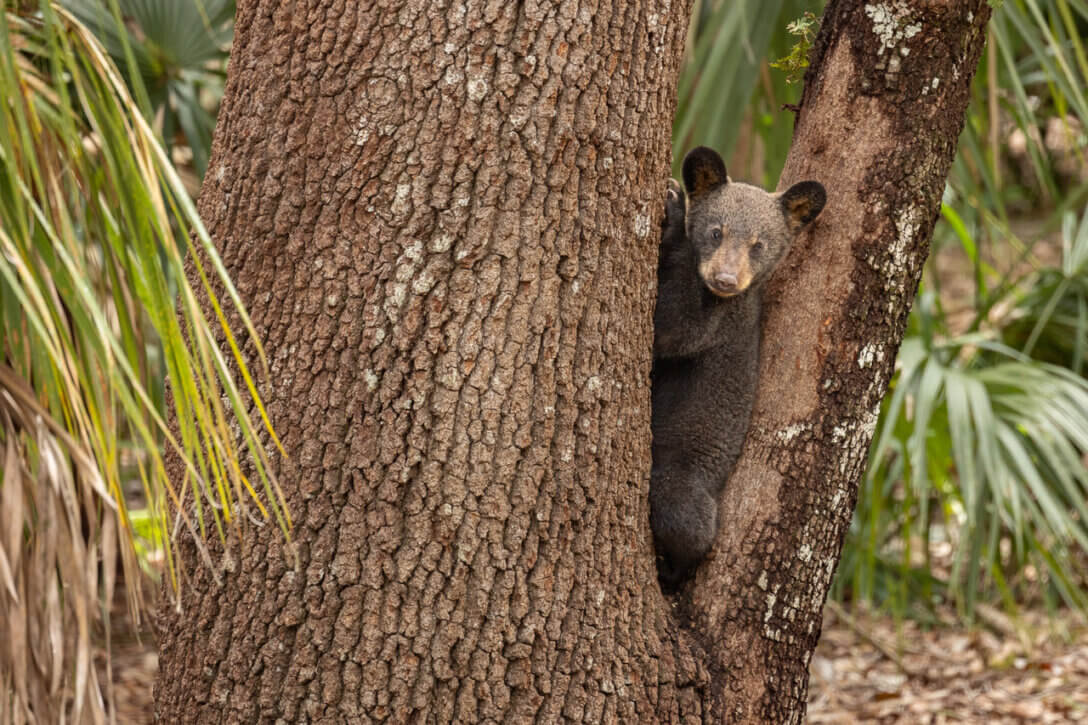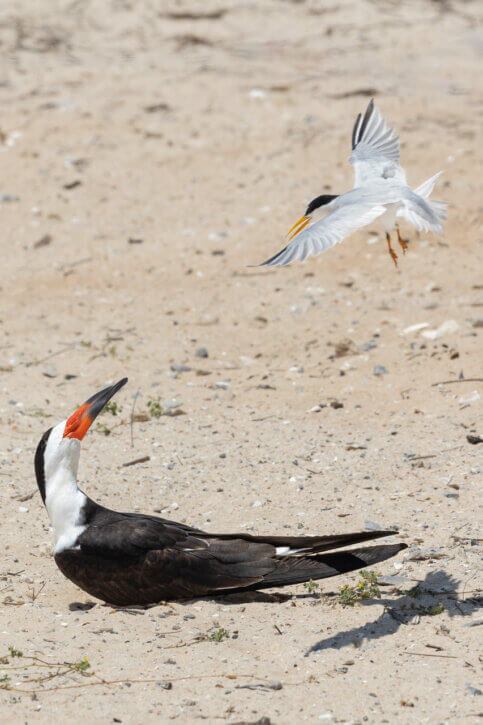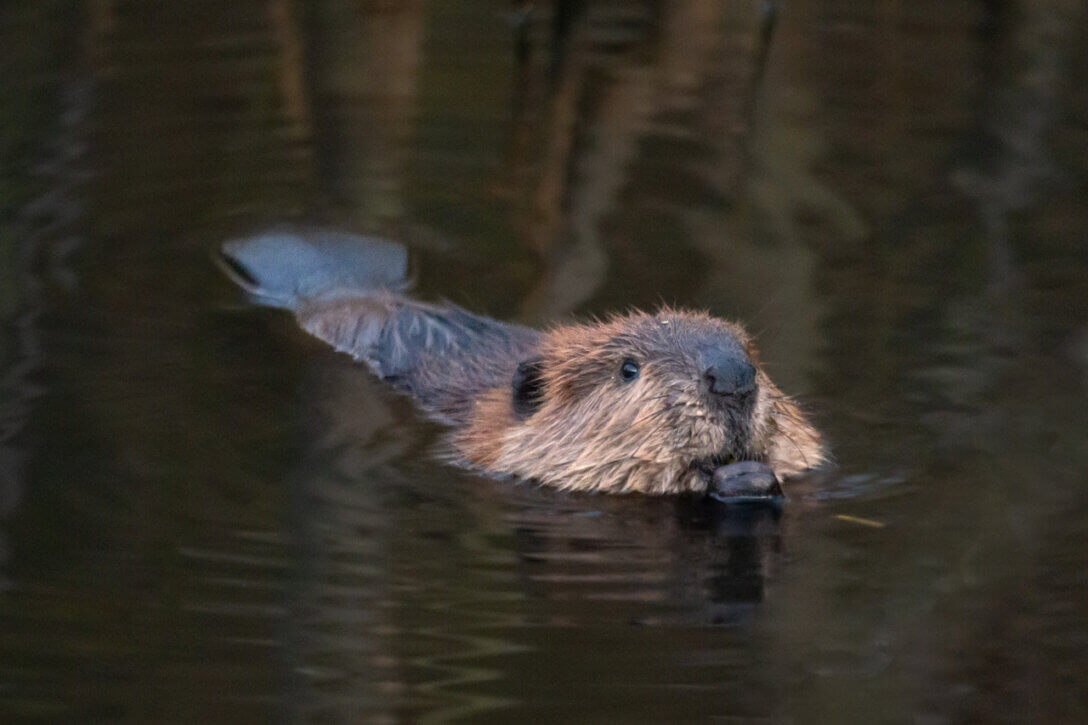An Interview with Author Kirsten Hines

Kirsten Hines is an author, biologist, wildlife photographer and conservationist who has spent her career capturing the stories and lives of animals all across the globe. Though she currently resides in Coconut Grove, Florida, Hines grew up in the Philippines and has spent much of her life traveling to different places to tell the stories of the region’s native wildlife.
In her most recent book, Wild Florida: An Animal Odyssey, Hines showcases and describes her encounters with some of Florida’s wildlife. The book features her experiences over the past few years, in which she traveled all across the state from Pensacola to the Dry Tortugas, detailing encounters with every animal from snakes and frogs to birds and deer.
In promotion of Wild Florida, Hines will host a talk and book signing on January 20 from 1 to 3 pm at Barnes & Noble on Airport Boulevard in Pensacola. During this event, she will discuss Florida’s natural history, animal species as well as share the stories of some of her encounters with wildlife in the Panhandle.
Pensacola Magazine had the chance to speak with Hines about her life, work and her latest book release.
PM: Can you tell me about growing up in the Philippines and how that experience has shaped your passion for wildlife?

Hines: I was actually supposed to move to the mountain hill tribe in Indonesia, and at the last minute, we moved to the Philippines instead. The Indonesian spot was supposed to be really rural; it was still a rainforest. So, my parents had spent a whole lot of time preparing me for that. Then instead, we flew into Manila, and it was kind of a shock to be in the second largest, and at the time, most polluted city in the world. Our only real contact with nature was once a week, we would transfer from the city and go out into the provinces for a little bit. We lived in the city for quite some time, and then we went back and forth. During that time, I realized how much calmer I was in nature and having some greenery. It was also kind of over-hunted; the only pretty bird that was there got killed by a boy with a slingshot. But there was enough nature there that I could really see the difference. Also, during the time that we were commuting for several years, I watched the city engulf all of the rural areas that were there, and it was really impactful. I had been made so aware of how much the nature mattered and then to watch it disappear—it definitely shaped my interest in conservation. I was already passionate about wildlife, but I became even more passionate about the conservation side of it and really making sure that these animals had habitats and also recognizing firsthand how important having that habitat was for people, also.
PM: How does your background as a biologist inform your photography?
Hines: I started off as a herpetologist, which means I was studying amphibians and reptiles. When I was working on those projects, I loved the fieldwork, but I really struggled with the data analysis and being so objective and the writing style. I really wanted to be passionate, but you’re not supposed to be passionate in those situations. I also recognized that if you became a really good scientist, you would be stuck in a lab somewhere, and that was not what I wanted; I wanted to continue being out in the field. So, after I finished my master’s degree, I decided I was going to travel. My fellow lab mates gave me my first ever camera that was this little point and shoot. It made me realize that I was looking at the world more deeply and in a different way. I’d also always been a writer, and suddenly it occurred to me, ‘Well, why don’t I use my biology background and all of this ecology and animal behavior knowledge that I have, and channel that through communicating about nature and wildlife? Using writing and photography as my tools?’

PM: Do you always set out with the intention of photographing the animals, or do you explore more as a tourist and take your camera with you wherever you go?
Hines: Well, I would say I’m a nature tourist to begin with. I spend very little time in the cities. As a tourist, I spent most of my time in Australia. During this time, I was deciding ‘Wow, I kind of like photography.’ I didn’t even own a SLR at that time. So, that trip was definitely more about finding my way and what I wanted to do with my life. But since then, I have always been somebody who goes places because I want to experience that place. I try to go places for longer periods of time. I research ahead what kind of nature there is and what kind of animals I might see. Then I just try to entrench myself in that and get as deep into it as I can. I’m always going to see some kind of natural phenomenon and then experience it as fully as I can to capture the stories both in writing and photography.
PM: Can you tell me about the wildlife that you’ve encountered in Pensacola or the Panhandle area in general?
Hines: The Panhandle is fascinating because it’s so different. I live in Miami. If you think about Florida, Pensacola is really temperate and is in fact a temperate biodiversity hotspot for North America. Of course, I am living in a tropical biodiversity hotspot. So, I go to Pensacola and I don’t know any of the plants. I am always surprised by the animals that are up there. It was eye-opening and it was really pretty. I was seeing things like redcockaded woodpeckers, which do get further south, but you still have intact forests up there that really house those birds. The Panhandle is also one of the few places where you can get pitcher plants. I saw some of the biggest beaver lodges I’ve ever seen anywhere in my life just outside of Milton and many sea birds that are nesting around Pensacola. It’s a really special place.
Part of what’s interesting is that Florida is known as this tropical state, but around the Pensacola area, we have this biodiversity hotspot for temperate species and this wonderful diversity of nesting birds and black skimmers and terns. I was just driving from Pensacola to the National Seashore there and I had to pull off [the road] and I didn’t have to pull off because of the traffic, but I was like, ‘Wow, look at all these birds that are just right here at the side of the road. That’s amazing.’ They’re nesting and they’re squabbling about whose nest should be where and it’s all happening right there in the middle of the city.
PM: What are some things that people living in the Panhandle can do to help conserve the wildlife that exists here?

Hines: You guys actually have a lot more natural areas than some other areas of Florida. So fighting to protect those and keep those reserves pristine is really important. Then for people who are living in the denser areas, landscaping with native plants is always really critical no matter where you are. What those exact plants are, of course, varies with where you are, and in the panhandle and Pensacola area, that includes more temperate species than it would down here [in Southern Florida]. But the concept is the same—just making sure that people within the urban areas are including those native plants in their yard so that all of the wonderful reserves you have up there can continue to be connected both amongst the reserves but also throughout the urban corridors as well.
PM: What are some of the things that you would like readers to take away from Wild Florida?
Hines: I hope they’ll get a whole new understanding of Florida. I feel like people in Pensacola probably are ahead of the game a little bit because they’re already aware that [most people] view Florida as this tropical oasis. For you guys, it’s not a surprise that you have beavers, whereas everybody in the rest of Florida is like, ‘Whoa, what? We have beavers here?’ So I feel like to some degree, you guys already have a better awareness of the diversity that Florida has to offer. But really, what I’m hoping is that people will appreciate how diverse Florida is and how much more it has to offer than this typical idea that it’s just alligators and beaches. I think you guys are already ahead of the game in that, but I do hope that that will be reinforced. I’m hoping that people that go through the book will just have a whole new love of Florida and maybe even a willingness to want to help conserve it.
For details on her upcoming Pensacola event, visit kirstenhines.com. To stay up to date with Hines and check out more of her work, follow @KirstenNatureTravel on Facebook.